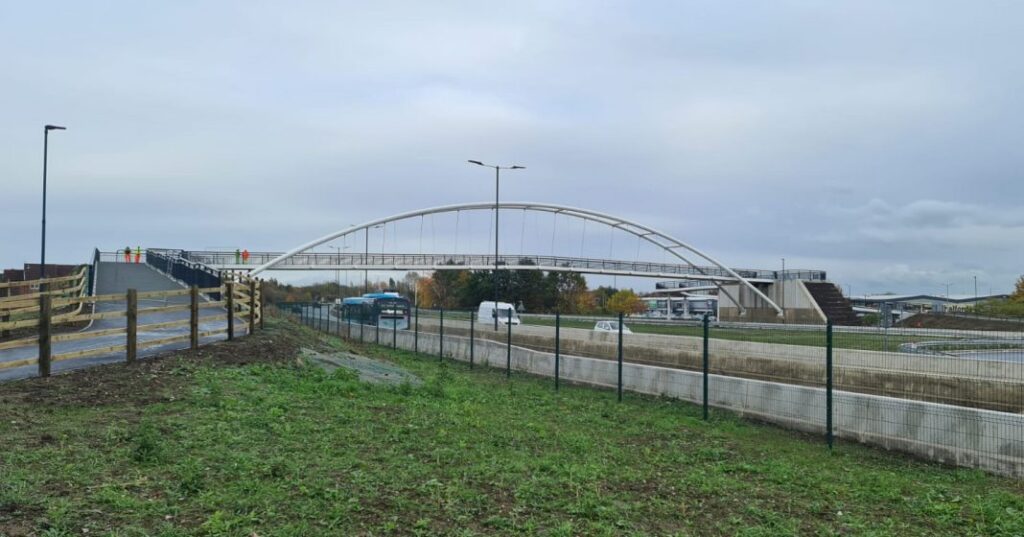AECOM engineers’ technical expertise solves challenge of fan footfall
LONDON (Oct. 29, 2020) — AECOM engineers have come up with an unusual hybrid design for Derby’s new A52 Meadow Lane Footbridge, making it match-fit for football fans visiting Pride Park Stadium.
The team from global infrastructure consultancy AECOM was tasked with designing a replacement footbridge for the A52 Wyvern Transport Improvements scheme, which needs to cross both the new A52 and the slip road, bringing the structure’s span to just over 80m. The design of the new footbridge was challenging because of the number of people who might be using it at any one time to walk to and from the stadium. Whereas a footbridge is typically 2m wide, the new structure needed to be 4m wide to accommodate up to 30,000 fans using it in a short space of time when sporting events return to full spectator capacity.
But engineers were faced with the problem that a footbridge this long and wide, with so many people potentially using it at one time, has increased risk of ‘bounce’ from the footfall. In addition, the structure would require special aerodynamic modelling to ensure it can withstand all weather conditions.

The length, breadth and location of the bridge called for an unusual hybrid design combining a ‘bowstring’ and ‘thrust arch’ structure, which AECOM engineers believe is the longest of its type in the UK. With the ‘bow string’ bridge design, the deck tensions the structure to reduce movement. The ‘thrust arch’ element sees the bridge’s arch continue below the deck, to also help secure the structure. In addition, engineers have placed mass dampers on the footbridge, which are big weights on springs designed to bounce the opposite way to the bounce of the structure, thereby mitigating movement. Concrete ballast weights below the arch and deck further reduce bounce from footfall and movement from wind.
AECOM engineer Ben Raynes said: “We believe this design has resulted in an iconic gateway structure for Derby, with a visual simplicity which belies the complicated engineering needed to make it work. This was a technically challenging project, but we’re delighted with the result and hope communities in Derby and football fans will enjoy using it for generations to come.”
